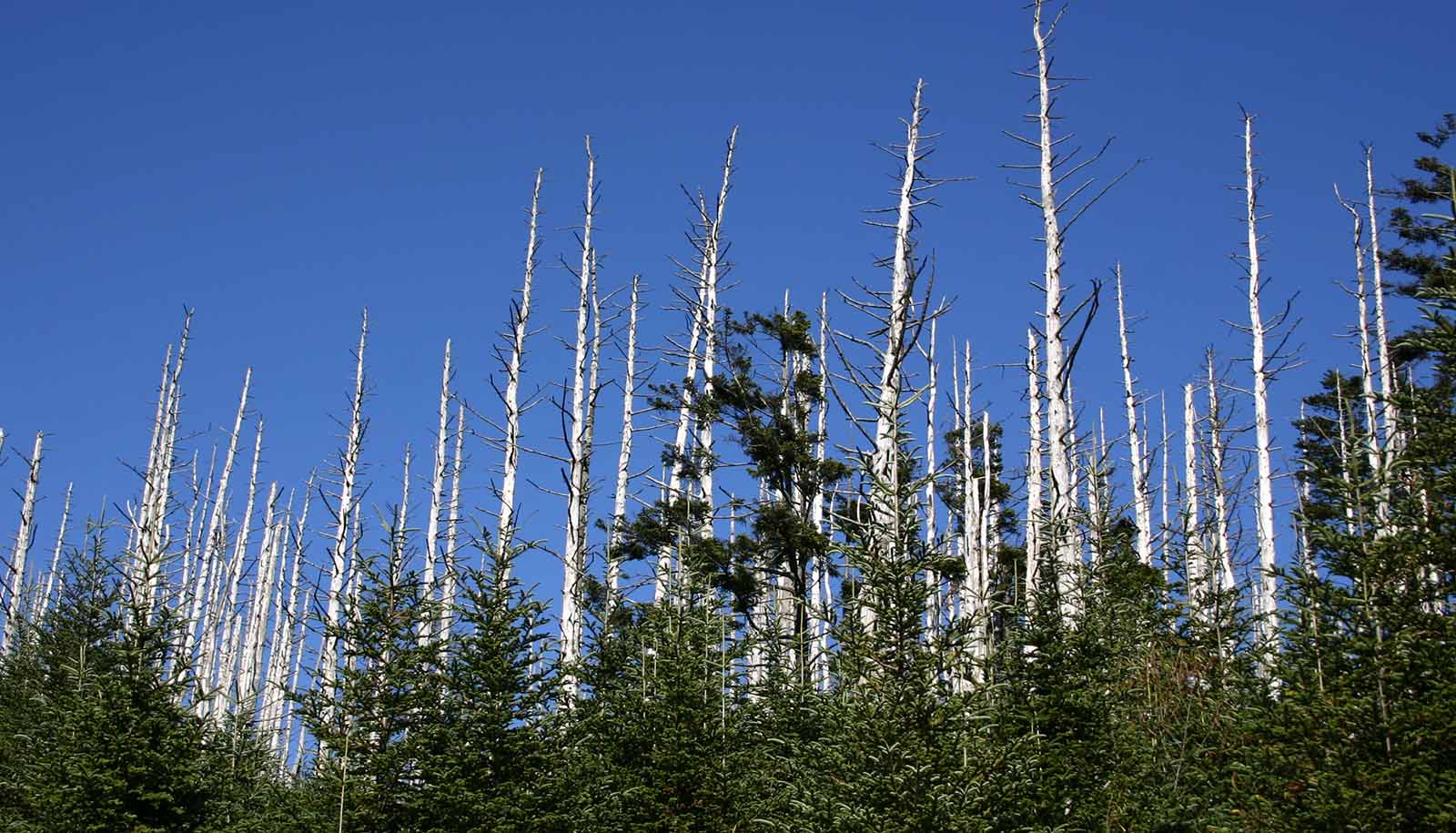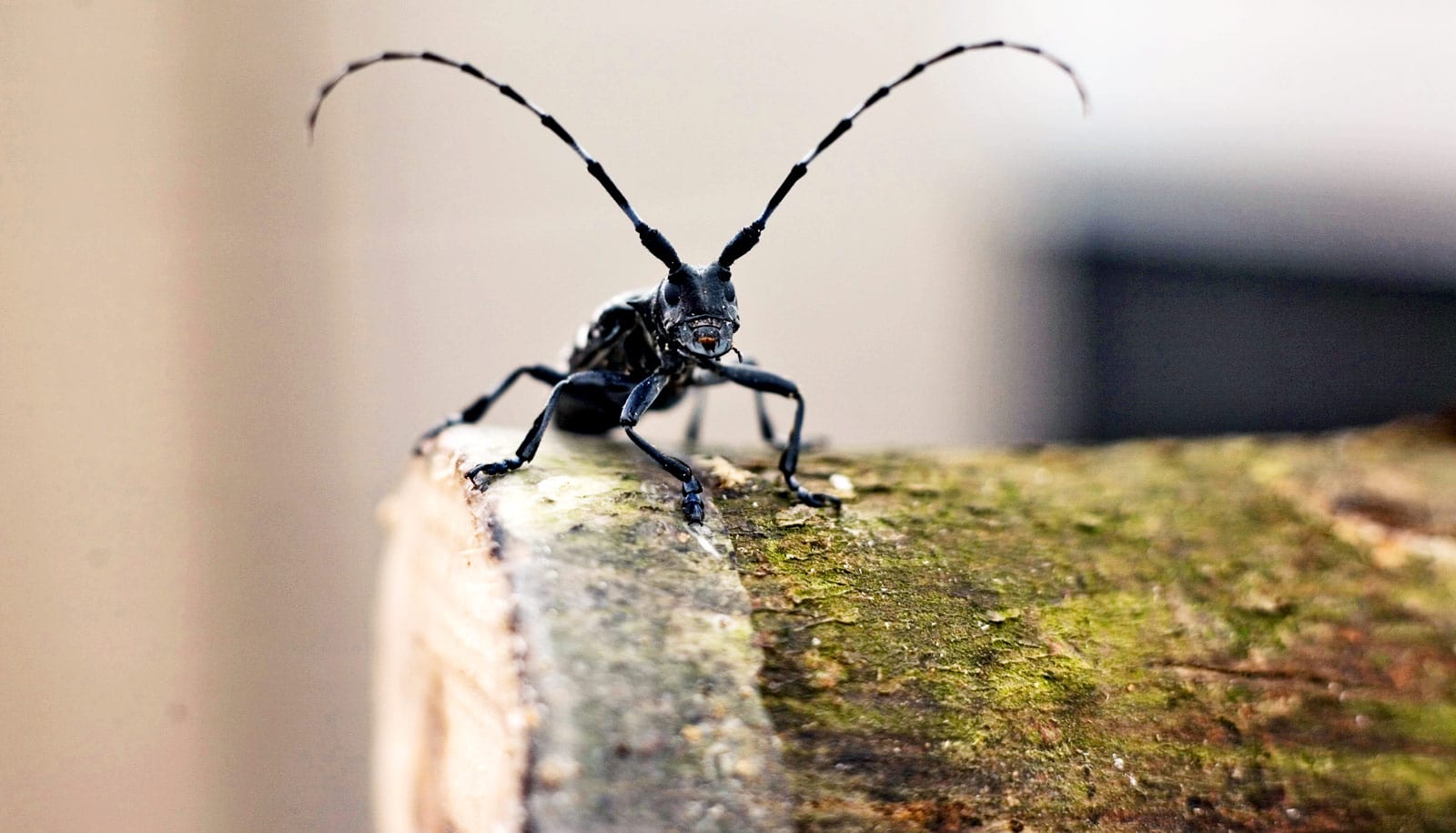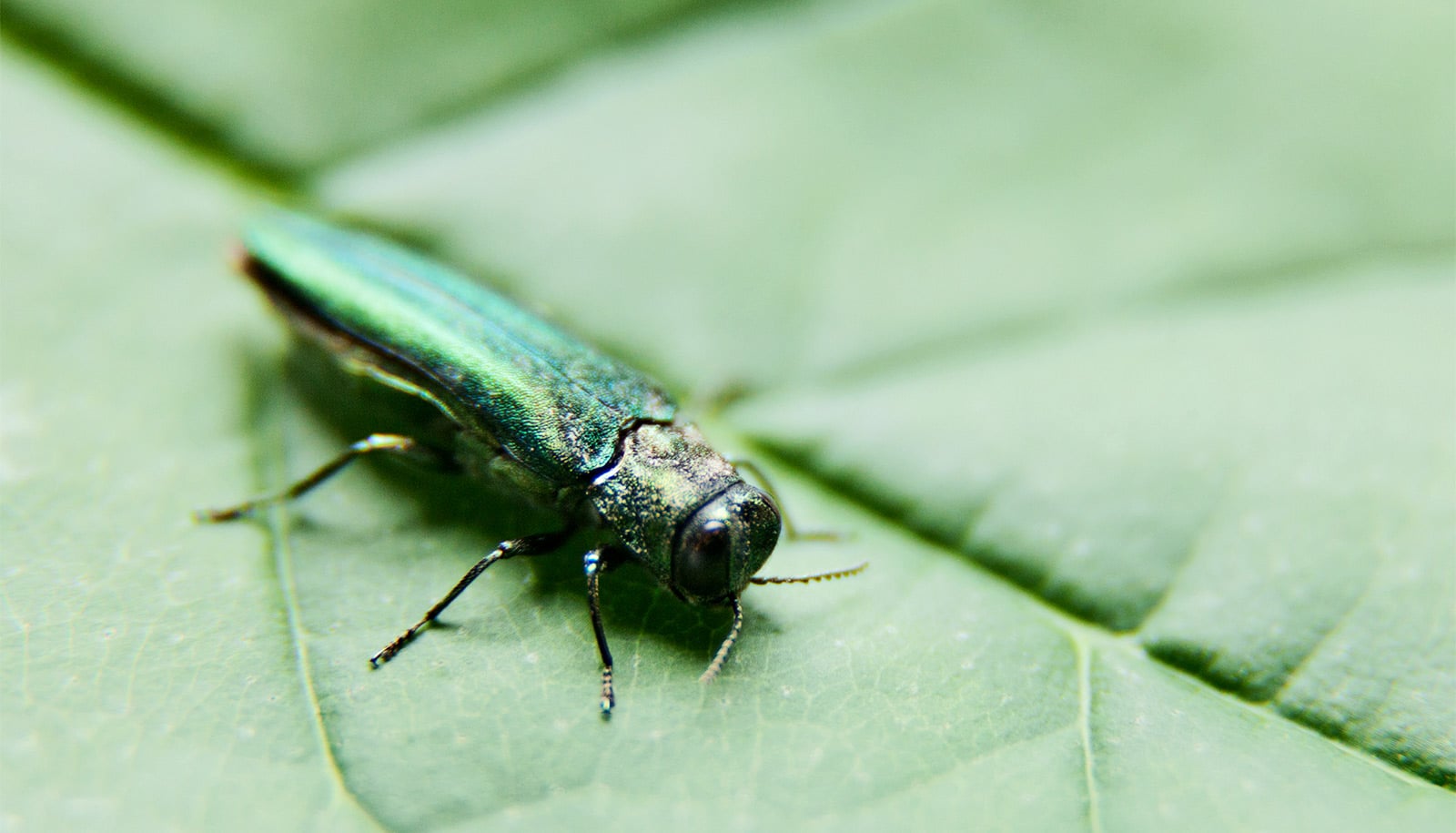
The emerald ash borer. (Credit: Chesapeake Bay Program/Flickr )
Invasive pests kill enough trees to hamper carbon storage
Invasive pests kill so many trees each year, they cut the carbon storage of forests by the equivalent of emissions from 5 million cars.
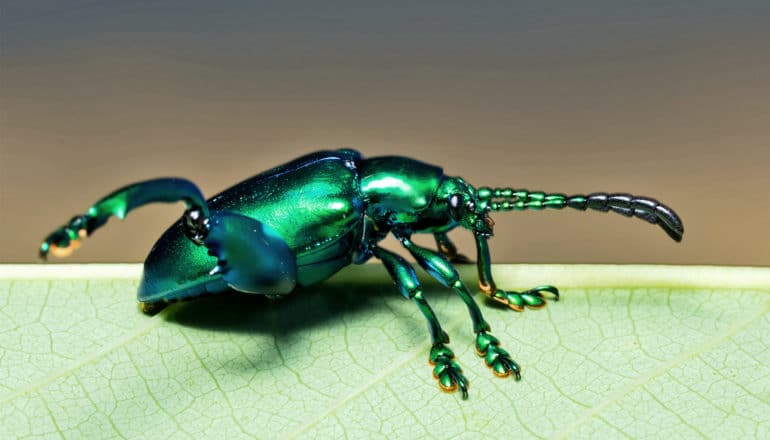
In addition to the ecological impact, the devastation invasive pests wreak on trees reduces carbon storage equivalent to the amount of carbon emitted by 5 million vehicles each year.
Invasive insects and pathogens have wreaked havoc on ash, elm, chestnut, and other trees, wiping some almost completely from American forests.
The trees the 15 most invasive pests kill each year contain 5.53 teragrams of carbon (TgC), equivalent to about 6 million US tons.
“Not all of those dead trees immediately become carbon sources, but they are being taken away from the live biomass, which functions as carbon sink. Part of the dead biomass will eventually get into the atmosphere,” says Songlin Fei, a professor in the forestry and natural resources department at Purdue University.
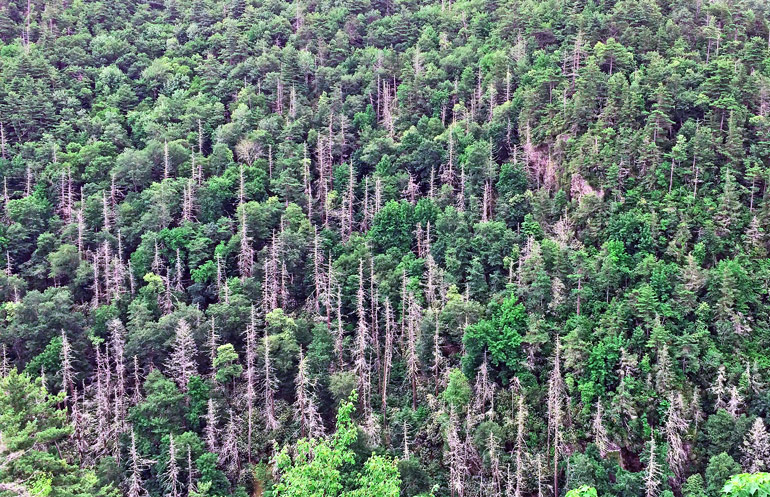
Losing the fight
The losses are especially concerning as some have suggested that forest carbon sequestration might fight climate change by capturing and retaining more of the carbon from the atmosphere. Losses due to invasive species could damage those hopes, Fei says.
“If we are thinking of forests as a tool to mitigate climate change, the tool itself is being challenged by these invasive pests. Not only is the tool damaged, but also it’s becoming an impediment.”
As reported in the Proceedings of the National Academy of Sciences, researchers analyzed 10 years of forest surveys covering 93,000 field plots in the contiguous United States. They measured tree loss due to invasive pests—above and beyond natural tree deaths—for the most harmful pathogens and insects the Forest Service tracks.
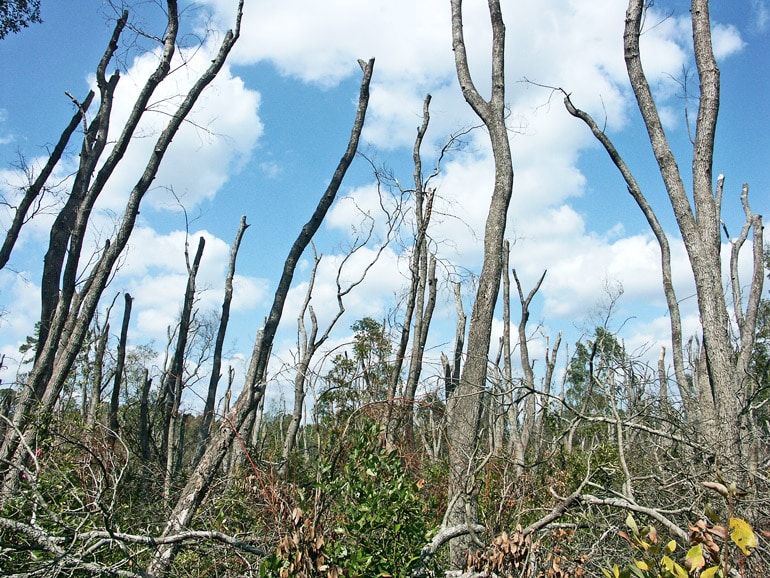
Of the 15 invasive pests in the study, nine are pathogens, four are sap-feeders, one is a wood-borer, and one is a foliage-feeder. The most damaging pests, in terms of biomass loss apart from expected natural losses, include the emerald ash borer, Dutch elm disease, beech bark disease, and hemlock woolly adelgid.
The most damaging species for mortality rate, as measured in percent of the biomass loss, were laurel wilt disease (11.4%), chestnut blight (6.3%), and butternut canker (5%).
A growing problem?
While the current annual loss from invasives is only 0.04% of the total live biomass in the contiguous US, the problem could grow, the researchers say. Of the 15 pests, three have only invaded about half of their potential range and seven have invaded less than 35%.
“While the total biomass losses reported here are only a relatively a small percentage of the total biomass, it is important to emphasize that the trajectory of future impacts of these pests can be anticipated to increase, as most of the damaging pests analyzed here have not invaded the full ranges of their hosts,” the authors write.
“Given the continued range expansion of existing pests and the anticipated establishment of new nonnative pests in the future, proactive policies aimed at mitigating future invasions are likely to yield secondary benefits of reducing greenhouse gas emissions.”
The researchers also caution that their estimates are certainly low because they did not include losses from urban areas. They have also not included hundreds of other pests that inhibit tree growth and development of root systems that can hold significant amounts of carbon.
The researchers plan to work on determining the amount of the carbon from dying trees that returns to the atmosphere and the amount that soil captures. The National Science Foundation and the USDA funded this work.
Source: Purdue University
The post Invasive pests kill enough trees to hamper carbon storage appeared first on Futurity.
Share this article:
This article uses material from the Futurity article, and is licenced under a CC BY-SA 4.0 International License. Images, videos and audio are available under their respective licenses.
Related Articles:
Little gaps let eastern hemlocks fend off pest
Sept. 19, 2023 • futurityTool predicts which nonnative insects will go rogue
Oct. 21, 2019 • futurityLinks/images:
- https://www.futurity.org/forest-restoration-carbon-emissions-2099142-2/
- https://doi.org/10.1073/pnas.1820601116
- https://www.futurity.org/algorithm-trees-google-maps-1250862/
- https://www.purdue.edu/newsroom/releases/2019/Q3/invasive-pests-kill-so-many-trees-each-year,-its-equal-to-5-million-car-emissions.html
- https://www.futurity.org/invasive-pests-insects-trees-carbon-storage-2134282-2/
- https://www.futurity.org

